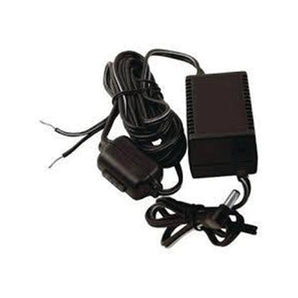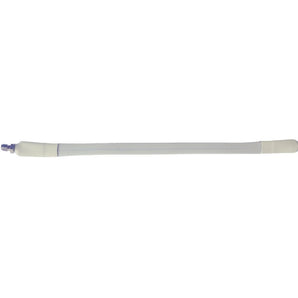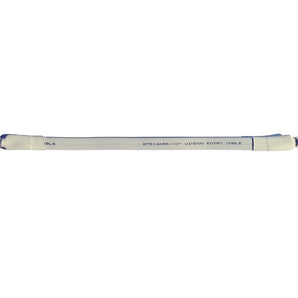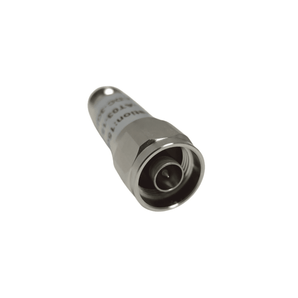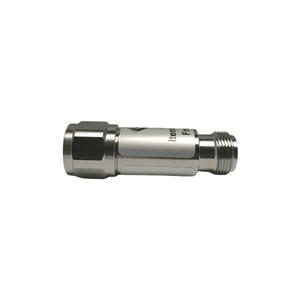How to Ground a Lightning Surge Protector?
Lightning Surge Protection for Cell Phone Signal Boosters
Cell phone signal boosters (cell phone repeaters) are great investments for improving cell phone signal in homes and offices. The one thing many people do not consider is protecting their investment against power surges caused by lightning.
In the event of lightning strikes, lightning surge protectors help protect people, your property, and electronic equipment, inside the building.
What is a Lightning Surge Protector?
A lightning surge protector (lightning surge arrester, surge suppressor, or UHF lightning arrestor) is a small lightning protection device that will protect your signal booster from electrical discharge or lightning surges from nearby lightning strikes.
It’s important to note that they will not protect against direct lightning strikes. Lightning bolts carry billions of joules that have the power to cause a lot of damage to a home. A small surge protector is not equipped to protect your equipment from that much energy. To protect your equipment from direct lightning strikes, it's recommended to install a lightning rod.
Do I need a Lightning Surge Protector?
Lightning surge protectors are HIGHLY recommended.
Most outdoor antennas are installed on the roof of a house or commercial building. The inside of the antenna and the supporting brackets consist of metal components. The metal acts like a magnet for electrical static. Therefore, they are vulnerable to electrical surges during storms.
If the outdoor antenna were to undergo damage from nearby lightning strikes, without a surge protector, the voltage surge would flow through the coaxial cables frying the cell phone signal booster system and possibly the entire building's electrical system. How? For a signal booster to work, it needs power. So, you would plug in the amp's power supply into a wall outlet. In doing so, the booster system is connected to the building's electrical system, as well as every device connected to it.
South Africa adopted the plug system that was standard in the UK in the 1930’s. Generally, residential outlets are connected to 230-volts. If more energy was to pass through them, the chances of an overload increase. Without a surge suppression device, the lightning surge's energy would run through the antenna system, the coaxial cables, and possibly the power outlets, damaging everything in its path (e.g. appliances, game consoles, broadband modems, wifi routers, TVs, etc.). Even worse, it can cause a fire, especially if there is a short circuit in the receptacle wiring. If you wanted to inspect your outlets to check if there is something wrong with the wiring, you can purchase a receptacle tester from an outlet that sells electrical equipment.
With a surge protector installed, the energy will be dissipated and grounded once it reaches the lightning surge protector. As a result, a surge protector protects your signal booster, your home, and the people in it. Plus, with the addition of power strips or GFCI (Ground Fault Circuit Interrupter) outlets, you're protecting your circuit breaker, service entrance, and your electronic devices.
How to Install a Lightning Surge Protector?
Installing the surge protector is quite simple, and we would recommend contacting a certified electrician to do the installation.
Step 1 – Make Sure you Have the Correct Equipment
Before installing the surge protector, you must make sure you have the correct surge protection device for your signal booster. Using the incorrect one could negatively impact the performance of the cell phone signal booster.
How do you know which surge protector is the correct one? Signal boosters and surge protectors have impedance ratings – 50 Ohm or 75 Ohm. The surge protector’s impedance rating must match that of the signal booster. Boosters with type-N or SMA connections have an impedance rating of 50 Ohms, and boosters with type-F connections have an impedance rating of 75 Ohms.
Lightning surge protectors are not available for vehicle signal boosters. The chances of a vehicle suffering from lightning surges are very slim.
Step 2 – Installing the Lightning Surge Protector
The surge protector will be installed between the outdoor antenna and the amplifier. It’s recommended to install it outside your home at the point of entry (right before the outside cables enter the building). This way you can keep the surge protector away from combustible materials and prevent fire hazards.
Our high-quality lightning surge protectors include a double-sided female coaxial lightning surge protector bulkhead adapter and a 1 meter coax cable.
To install the surge protector, you would:
- Connect the 1 meter cable to the outside antenna.
- Connect one end of the surge protector to the 1 meter cable – either end will work, surge protectors are bi-directional, meaning they can’t be installed backward.
- Connect the other end of the surge protector to the coaxial cable that connects to the amplifier.
Step 3 – Grounding the Lightning Surge Protector
Grounding the surge protector is extremely important. The SANS 10142-1 (Edition 2), is the most recent legislation applicable to the electrical trade and requires all antennas, such as booster antennas, radio antennas, and cable tv antennas, to be grounded to protect everyone and everything within the vicinity. If the external antenna is shocked with high voltage energy, this step will earth ground the energy.
To ground the surge protector, a grounding wire is needed. It’s recommended to use a 10 AWG copper wire or lower. The lower the gauge number, the thicker the wire will be. Do not use braided copper wire.
Attach the top end of the ground wire to the ground connector and use a set of pliers to crimp the wire on the connector firmly. The other end of the wire needs to be attached to a grounding point. When installing the wire, avoid creating any sharp bends on the cable.
Different Grounding Points:
- Ground Rod (Most Common): A metal rod outside buildings that is buried at least 2.5 meters into the ground.
- Metal Electrical Service Panel: Usually, the panel is connected to the grounding rod.
- Metal Electrical Raceway or Conduit: Typically, they are already grounded, simply attach a grounding strap to the electrical raceway or conduit.
- Water Pipe: The pipe must be in direct contact with the earth. Should only be done if the water pipe is 1.5 meters away from the entrance of your home AND if the pipe is at least 3 meters above the earth before entering your property.
- Metal Frame or Structure of a Building: Only use if no other option is available.
Avoid attaching the cable to materials that lead inside your home or building.
Before grounding the surge protector, we recommend you check the latest SA electrical grounding rules. Remember, it is recommended that a qualified electrician installs the surge protector.
What Happens When Lightning Strikes?
If lightning strikes nearby and your surge protector is affected, you will need to replace the inexpensive gas fuse cartridge (gas discharge tube) inside the surge protector.
Signal Booster Lightning Surge Protectors (50 Ohm)

OVERVIEW:
- Protects booster from lightning surges
- Frequency Range: Up to 3 GHz (3,000 MHz)
- Attenuation: Less than 0.2 dB
- For Wilson Pro Signal Boosters
Contact Us
Bolton Technical is a leading provider of cell phone signal boosters, devices that amplify 4G LTE, 3G and voice for any phone and any mobile network operator for homes, offices, or cars. We’ve boosted over signal for thousands of homes, buildings, and vehicles across South Africa
- Free consultation(ask us anything) with our JHB-based customer support. Email us or Phone 011 749 3085
- Free shipping on orders R500 or above.
- 30-day money back guarantee. You want to make sure you're satisfied.
Our goal is simple: keep people connected. Ask us anything and we'll be glad to help.



